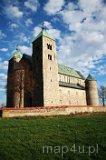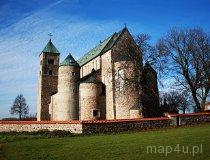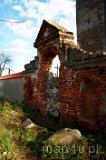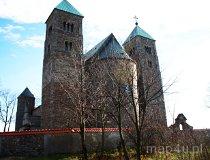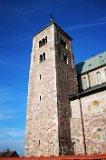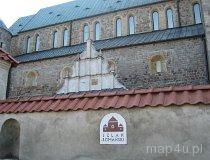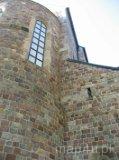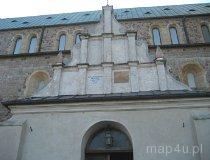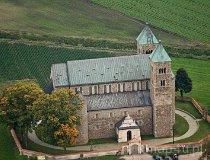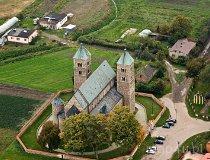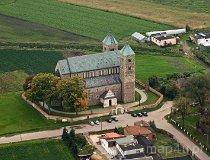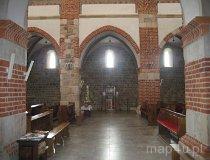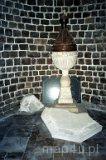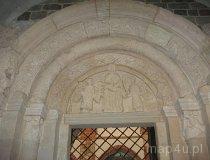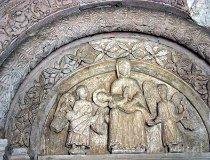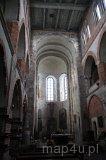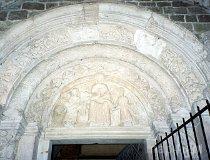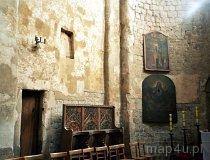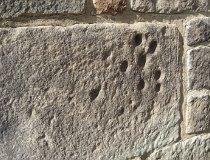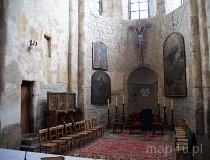Blessed Virgin Mary and St Alexis’ Archcollegiate Church
Description
The Archcollegiate church in Tum is a classic Romanesque building, which is indicated, inter alia, by its impressive tympanum. The frescos are also interesting. Characteristic features of the style are: the building material – cut stone, numerous round turrets, small windows indicating the defensive character of the structure and a presbytery with a semicircular apse.
It is also, supposedly, the largest Romanesque temple ever built in Poland. In the basements of the church, there survived the remains of the Blessed Virgin Mary’s Abbey connected with St Adalbert, whose sanctuary and relics are currently in Tum.
Date or time of building
1141
Date or time of building
1161 r. (XII w.)
Building material
The church is a brick structure, made of granite, sandstone and rubble.
History
The Archcollegiate Church in Tum was constructed on the place of a Benedictine abbey, founded in 997 by Boleslaw the Brave in St Adalbert’s presence. In 1140, the Abbey was moved to Mogilno and its former buildings were demolished. The reason, which can be only speculated, was probably the return of paganism or passing the land to the Archbishopric of Gniezno. The current building was constructed in 1141. There are, however, many theories concerning its foundation, which is attributed to the archbishop of Gniezno, Jakub of Żnin, Ladislaus Herman or the duchess Salomea. Several synods, which are considered as the origins of regional councils of the gentry in Poland took place there. The Tum collegiate was the place of 21 provincial synods, called “synods of Łęczyca.” The first one was summoned in 1181 and the last one took place in 1547. The collegiate was frequently destroyed by invaders: the Tatars, the Lithuanians, the Teutonic Knights and, obviously, the Swedes. Until the 18th century, the church was under royal protection and it was the seat of the archbishops. It was burned during the Battle of the Bzura River in 1939 and was given a new reinforced concrete ceiling after the war. In 1967, the primate Stefan Wyszyński and the cardinal Karol Wojtyła led the ceremonies finishing the Millennium of Poland in the Łęczyca Archcollegiate Church in Tum.
Curious details
On one of the corners of the church, there are small marks, the origins of which has been interpreted in many ways for years. According to the legend, the devil Boruta tried to remove the collegiate church from his land. He grasped it, but could not lift it and left the marks on the stone.




